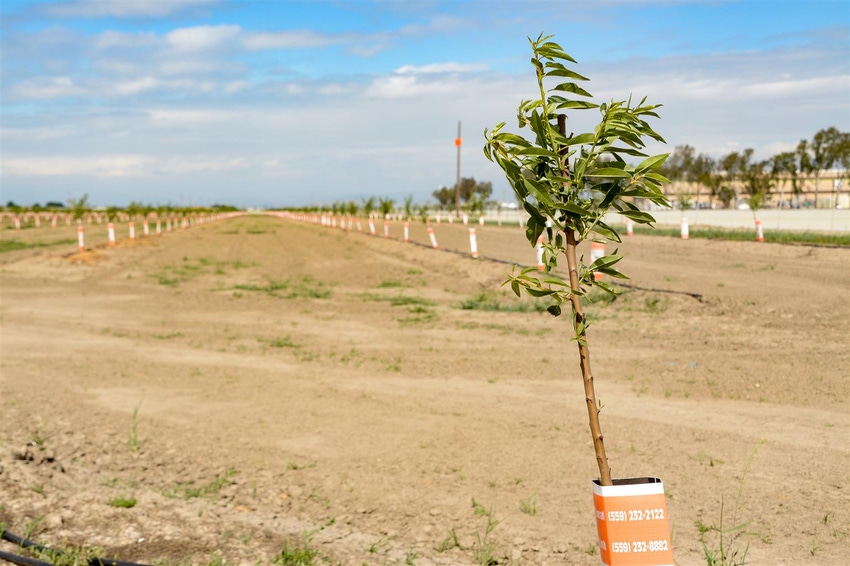April 27, 2017

Chalk up another milestone for the California almond industry as bearing acreage is now at least one million acres.
Total 2016 acreage of almonds, which includes trees less than three years old also known as “non-bearing,” is estimated at over 1.24 million acres, a 7 percent boost from the 2015 revised figure of 1.16 million acres.
Bearing acreage in 2016 was 940,000.
The latest acreage estimate is part of the most-recent almond acreage report by the U.S. Department of Agriculture’s National Agricultural Statistics Service (NASS). The NASS numbers have been showing a steady climb in almond acreage going back to at least 1995, when bearing acreage was just 418,000.
The numbers come from a voluntary survey that seeks input from 6,000 almond growers, though the NASS study recognizes that it is unlikely to achieve 100 percent completeness from all growers.
Nearly 75 percent of the state’s almond acreage comes from the San Joaquin Valley counties of Kern, Fresno, Stanislaus, Merced and Madera. Kern has the highest acreage at nearly 150,000 total acres planted.
Of the more than two dozen different tree varieties planted, Nonpareil continues to be king at about a third of the total acres planted. Its acreage is 3:1 higher than the Monterey variety, the second-most popular variety of almonds planted.
At nearly 21,000 acres, the Independence variety, a self-fertile variety that is said to need fewer to no bees to pollinate, is quickly gaining in popularity with growers as acreage planted continues to rise each year.
Though total almond production for the 2016 crop won’t officially be tallied until later this summer, it has already hit a record 2.14 billion pounds, based on current receipts. This is significantly higher than the 1.9 billion pounds seen from the 2015 harvest and significantly short of Almond Board of California projections of 2.6 billion pounds within the next three years.
The last several years has seen a rapid increase in new almond plantings, as reflected in the number of non-bearing acres reported. In 2015 non-bearing acres totaled 240,000, a 41 percent increase over the previous year’s 170,000 non-bearing acres. In 2016 that figure was 300,000 acres, or 25 percent higher than the previous year.
Almond Board President and Chief Executive Officer Richard Waycott continues to talk up the environmental benefits such a large agricultural forest provides, which includes capturing and storing carbon dioxide.
California produces about 80 percent of the world’s almond supply. Much of these almonds are exported, which in turn provides billions of dollars in positive economic impacts to the state through the creation of jobs and development of services aimed at supporting the industry.
You May Also Like




